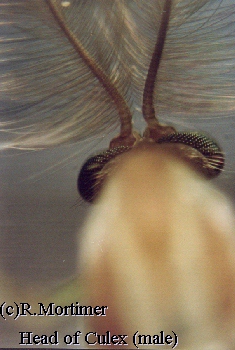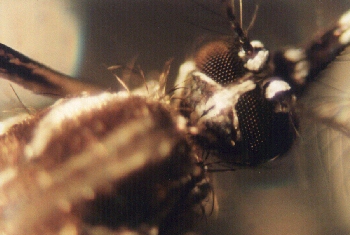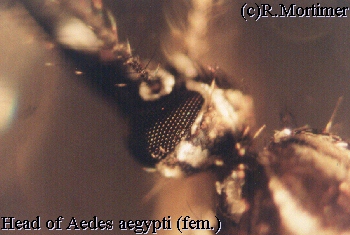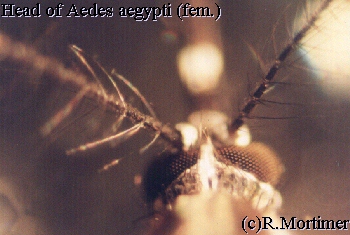|
Male vs. female by Roland Mortimer,
|
 |
|
Male vs. female by Roland Mortimer,
|
 |
As can be seen from the images, the males of both Culicini and Anophelini have beautifully plumed antennae whereas the females have antennae with very few sparse hairs distributed along their length. The males of these species also have palpi as long as the proboscis or longer and usually curved in an upward direction.
 |
 |
 |
 |
Though these insects seem sinister in their appearance and their mode of life, they still present beautiful aspects when studied closely, Aedes aegypti being black with white scale spots on her body and on the bases of the antennae, her rear legs have five silver-white rings spaced along their lengths. Aedes also has a white 'Lyre' on her thorax with two yellow 'Chords' in the centre. Aedes albopictus, so called from the Latin 'Albu' from albino (white) and 'pictis' from the Latin for painted, thus white-painted, is similar but there is a single broad median stripe on the scutellum. In European countries the common name for this group is 'Tiger mosquito' because of the 'stripes' and spots on the mosquito's body.
Comments to the author Roland Mortimer welcomed.
Please report any Web problems or
offer general comments to the Micscape
Editor,
via the contact on current Micscape
Index.
Micscape is the on-line monthly magazine
of the Microscopy UK web
site at Microscopy-UK